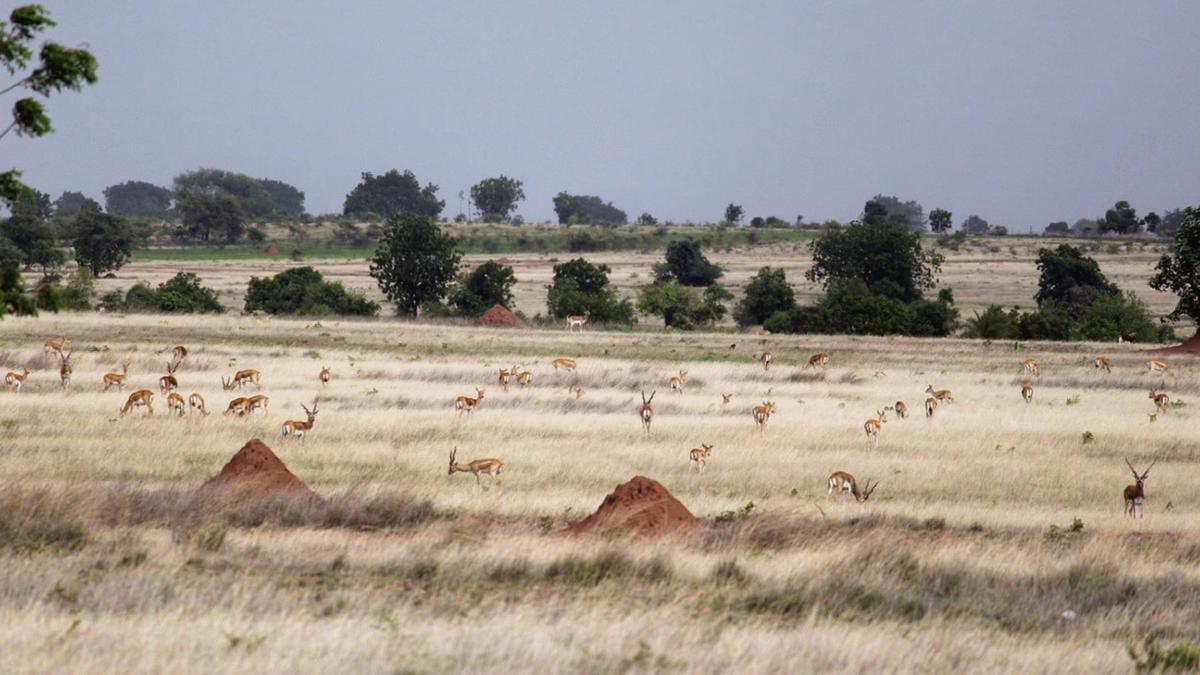News Highlights:
A new study conducted by the Indian Institute of Science (IISc) has shed light on how blackbuck in India has fared in the face of natural and human-induced challenges to their survival.
Key Takeaway:
- The blackbuck is found only in the Indian subcontinent.
- While males have corkscrew-shaped horns and black-to-dark brown coats, the females are fawn-coloured.
- The animals are mainly seen in three broad clusters across India pertaining to the northern, southern, and eastern regions.
IISc study:
- Genetic profiling:
- The study conducted by IIsc analysed the genetic profiles of blackbucks found across the country.
- Collected faecal samples of blackbuck from 12 different locations spread across eight States of India.
- In the faecal samples, researchers extracted and sequenced the DNA to study the genetic makeup of blackbuck and deployed computational tools to map the geographic locations with the genetic data.
- The team also used simulations to trace how the three present-day clusters may have evolved from their common ancestor.
- They Found that the ancestral blackbuck population first split into two groups: the northern and the southern cluster.
- Even though geographically close to the northern cluster, the eastern cluster seems to have emerged from the southern cluster.
- High dispersal of males:
- The team found that despite all odds, male blackbuck appears to disperse more than expected, thus contributing to gene flow in this species.
- Females, on the other hand, appear to stay mainly within their native population ranges.
- The data also showed an increasing trend in blackbuck population numbers.
Blackbuck (Antilope cervicapra):
- About:
- The Blackbuck (Antilope cervicapra), or the Indian Antelope, is a species of antelope native to India and Nepal.
- It is widespread throughout peninsular India in Rajasthan, Gujarat, Madhya Pradesh, Tamil Nadu, Odisha, and other areas.
- It is considered the epitome of grassland.
- It is considered the fastest animal in the world next to Cheetah.
- The blackbuck is a diurnal antelope (active mainly during the day).
- It has been declared the State Animal of Punjab, Haryana, and Andhra Pradesh.
- Protection Status:
- Wildlife Protection Act 1972: Schedule I
- IUCN Status: Least Concern
- CITES: Appendix II
- Characteristics:
- The blackbuck is a moderately sized antelope standing up to 74 to 84 cm.
- The blackbuck is the sole extant member of the genus Antilope.
- They are active during the day and form groups consisting of only females, males and bachelor herds.
- The long corkscrew-shaped horns are present only in males, though the females may develop smaller horns. The horns are more extended and divergent in blackbucks from northern and western parts of India.
- The fur coats of males have two-tone colouration. Its upper parts and outside of the legs are dark brown to black, while the underparts and insides of the legs are white.
- Blackbuck resembles gazelles closely, and they are distinguished through colouring. A gazelle is brown in its upper part, while a blackbuck is dark brown or black at the same spot.
Pic Courtesy: The Hindu
Content Source: The Hindu



